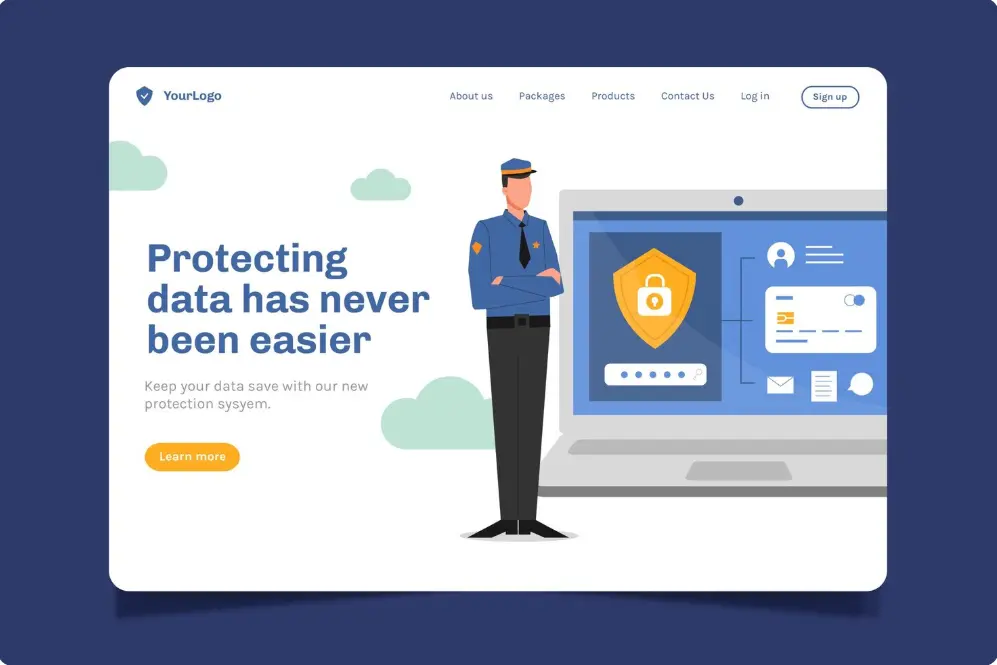Introduction to Data Protection
In today’s digital world, data protection has become more crucial than ever. With the increasing dependence on technology, organizations and individuals are producing, sharing, and storing vast amounts of data daily. This has made data a valuable asset—yet one that is vulnerable to theft, misuse, and loss.
Data protection refers to the set of strategies and processes put in place to safeguard personal, sensitive, and organizational data from unauthorized access, corruption, or loss. This practice ensures data privacy, integrity, and availability.
In this comprehensive guide, we will explore what data protection is, why it matters, the legal frameworks around it, best practices, and how businesses and individuals can implement strong data protection policies.
What is Data Protection?
Data protection is the process of securing digital information from unauthorized access, theft, or damage throughout its lifecycle. It involves a mix of technologies, policies, and procedures designed to ensure data privacy and integrity.
Key Components of Data Protection:
- Data Privacy: Ensuring that personal or sensitive data is only accessed by authorized parties.
- Data Security: Using tools like encryption, firewalls, and anti-malware to prevent breaches.
- Data Backup and Recovery: Regularly backing up data and having a plan to restore it in case of loss.
- Access Control: Defining who can access which data and at what level.
- Data Lifecycle Management: Managing data from creation to deletion with proper safeguards.
Why is Data Protection Important?
The importance of data protection cannot be overstated in our modern digital environment. Here are some key reasons why:
1. Legal and Regulatory Compliance
Many countries have implemented strict data protection laws. For example:
- GDPR (General Data Protection Regulation) in Europe
- CCPA (California Consumer Privacy Act) in the U.S.
- PIPEDA in Canada
These laws mandate how organizations must collect, process, and store data. Non-compliance can result in heavy fines and legal consequences.
2. Protecting Reputation
A data breach can damage a company’s reputation. Customers expect their data to be safe. Once trust is broken, it can be difficult to recover.
3. Preventing Financial Loss
Data breaches can result in direct financial losses through fraud or fines. Indirectly, companies may lose business due to negative publicity or customer churn.
4. Ensuring Business Continuity
Data loss from natural disasters, cyberattacks, or system failures can halt operations. Having a data protection plan ensures continuity.
Types of Data That Need Protection
Data protection strategies must be applied to a wide variety of data types, including:
- Personally Identifiable Information (PII): Names, addresses, social security numbers.
- Financial Data: Credit card numbers, bank account details.
- Health Information: Medical records, prescriptions.
- Corporate Data: Trade secrets, strategic documents, employee information.
- Customer Data: Emails, purchasing behavior, preferences.
Common Threats to Data Protection
Understanding the risks is the first step to mitigating them. Here are some of the most common threats to data protection:
1. Cyberattacks
Hackers use various techniques such as phishing, ransomware, and brute force attacks to access sensitive data.
2. Insider Threats
Employees or contractors with access to sensitive data may misuse it, either maliciously or accidentally.
3. Data Loss
Hardware failure, natural disasters, or accidental deletion can lead to irrecoverable data loss if not backed up properly.
4. Malware and Viruses
Malicious software can infect systems and compromise, steal, or destroy data.
5. Weak Access Controls
Without proper permissions and authentication protocols, unauthorized individuals may gain access to sensitive data.
Data Protection Laws Around the World
Legal frameworks are essential for enforcing data protection. Here are some of the most important ones:
1. GDPR (EU)
The General Data Protection Regulation is the most comprehensive data protection law in the world. It governs how personal data of EU citizens can be collected, stored, and used.
2. CCPA (USA)
California’s law gives consumers the right to know what data is collected and to opt out of the sale of their personal data.
3. PIPEDA (Canada)
The Personal Information Protection and Electronic Documents Act regulates how private sector organizations collect and use personal data.
4. Data Protection Bill (India)
India’s upcoming law aims to regulate personal data use and create a data protection authority.
5. Other Regional Laws
Countries like Brazil (LGPD), Australia, and South Africa also have their own data protection regulations.
Best Practices for Data Protection
To ensure complete data protection, organizations should implement a combination of technical, administrative, and physical safeguards.
1. Data Encryption
Use encryption to protect data both at rest and in transit. This ensures that even if data is intercepted, it cannot be read without the decryption key.
2. Regular Backups
Schedule regular, automated backups and store them in secure, off-site locations or cloud storage.
3. Access Controls
Implement role-based access control (RBAC) so that only authorized users can access specific data.
4. Employee Training
Educate staff on data privacy, phishing awareness, and secure handling of sensitive information.
5. Multi-Factor Authentication (MFA)
MFA adds an extra layer of security to account logins, making unauthorized access more difficult.
6. Security Audits and Monitoring
Regular audits and real-time monitoring can detect suspicious activities and prevent breaches.
7. Data Minimization
Collect only the data you need. Reducing the amount of stored data lowers the risk and improves privacy.
Data Protection in the Cloud Era
As more businesses move to cloud storage and services, ensuring data protection in the cloud is crucial.
Tips for Cloud Data Protection:
- Choose a reputable cloud provider with strong security protocols.
- Understand the shared responsibility model.
- Encrypt data before uploading to the cloud.
- Use VPNs for secure remote access.
- Monitor access logs and user activities.
The Role of Data Protection Officers (DPOs)
A Data Protection Officer is responsible for overseeing a company’s data protection strategy and ensuring compliance with regulations like GDPR.
Responsibilities:
- Conducting data protection impact assessments.
- Training staff on data handling.
- Monitoring data processing activities.
- Coordinating with regulators during audits or investigations.
Technologies Supporting Data Protection
Modern tools and technologies can significantly enhance data protection:
- Firewalls and Intrusion Detection Systems
- Endpoint Security Solutions
- Data Loss Prevention (DLP) Tools
- SIEM (Security Information and Event Management) Systems
- Blockchain for Immutable Records
Challenges in Data Protection
Despite best efforts, several challenges persist:
- Rapidly evolving cyber threats
- Complexity of compliance across multiple jurisdictions
- High cost of implementing robust protection
- Insider risks
- Managing large volumes of data across multiple systems
Future Trends in Data Protection
As technology evolves, so do the approaches to data protection:
1. AI and Machine Learning
These technologies are increasingly used to detect anomalies and potential threats in real-time.
2. Zero Trust Architecture
“Never trust, always verify” is becoming the gold standard in cybersecurity frameworks.
3. Privacy by Design
Incorporating data protection into the development process of apps and services from the start.
4. Quantum-Resistant Encryption
Preparing for the future where quantum computers could break current encryption methods.
FAQs on Data Protection
1. What is data protection?
Data protection refers to the practices and processes that safeguard personal and sensitive information from unauthorized access, theft, or damage.
2. Why is data protection important?
It helps ensure privacy, prevent financial loss, comply with legal regulations, protect reputation, and maintain business continuity.
3. What types of data need protection?
Personally identifiable information (PII), financial data, health records, corporate secrets, and customer information all require protection.
4. What are common threats to data protection?
Cyberattacks, insider threats, malware, data loss, and weak access controls are among the most common risks.
5. Which laws govern data protection?
Key laws include GDPR (EU), CCPA (California), PIPEDA (Canada), and other regional data protection regulations worldwide.
6. What are the best practices for data protection?
Data encryption, regular backups, access controls, employee training, multi-factor authentication, and security audits are essential.
7. How can businesses protect data in the cloud?
By choosing reputable providers, encrypting data, understanding shared responsibilities, and monitoring access.
8. What is a Data Protection Officer (DPO)?

A DPO is a person responsible for overseeing data protection strategies and ensuring compliance with relevant laws.
Conclusion
Data protection is not just a regulatory requirement—it’s a business necessity and a moral obligation. Whether you are an individual safeguarding personal files or a multinational corporation handling millions of customer records, the principles of data protection apply universally.
By implementing robust security measures, staying compliant with global regulations, and fostering a culture of privacy and responsibility, organizations can secure their data, protect their stakeholders, and build long-term trust.
